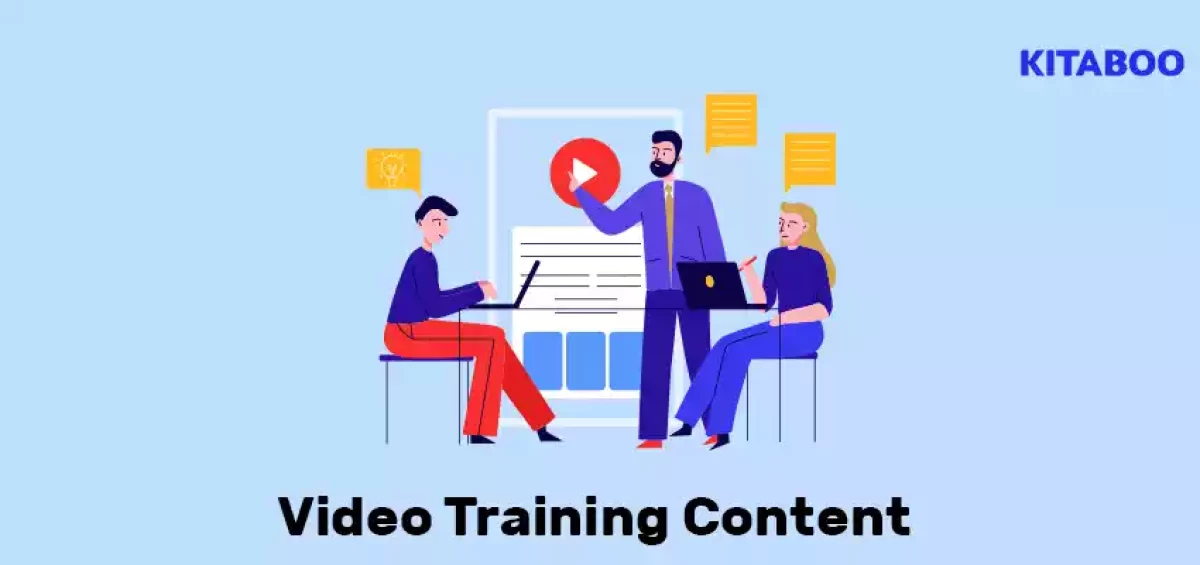Video content has become one of the most heavily consumed forms of content. A trend that is expected to continue. Platforms like Facebook, Twitter, and YouTube actively promote short, informal videos, which are increasingly used by customers to find solutions to their problems.
For example, the number of digital video consumers worldwide is expected to stand at 3.5 billion, highlighting the ever-growing audience for video content. On average, people watch about 17 hours of videos per week. They are also 52% more likely to share video content than any other type of content.
Similarly, businesses are increasingly leveraging video content to engage consumers, share information, and drive sales, making it an essential component of effective digital marketing strategies.
According to HubSpot’s State of Video Marketing survey conducted with Wyzowl in 2023, nearly 91% of businesses now use video as a marketing tool, marking the highest usage rate since the survey’s inception. This highlights video content’s growing prominence in marketing strategies, with marketers reporting an unprecedented growth in key performance indicators (KPIs) like traffic, leads, sales, and audience understanding.
Short-form video content, in particular, is not just popular among consumers, it’s also yielding the highest return on investment (ROI) for businesses. In fact, 73% of consumers prefer watching short-form videos to learn about a service or product. As such, training videos can cover a wide range of topics, from simple software tutorials to complex compliance policy updates.
As videos continue to gain popularity, it’s crucial to ensure that your training video is effective and reaches the intended audience. This is where cutting-edge digital platforms like KITABOO come into the picture, helping create interactive content for learning and training at schools, colleges, and organizations.
Let’s explore a bit more.
Table of Contents:
I. 7 Tips to Create Effective Training Videos
- Start with Clear Learning Objectives
- Script and Storyboard Thoroughly
- Incorporate Engaging Visuals and Interactive Elements
- Opt for High-Quality Production Values
- Utilize the Power of Storytelling
- Ensure Accessibility and Inclusivity
- Evaluate and Iterate Based on Feedback
II. Final Thoughts
7 Tips to Create Effective Training Videos
Creating effective training videos is an art that combines technology, pedagogy, and creativity, ensuring learners are engaged, informed, and empowered. And providing dynamic learning experiences is the need of the hour.
Here are our 7 tips to create training videos that not only convey information efficiently but also inspire and engage learners.
1. Start with Clear Learning Objectives
Before diving into video production, it’s crucial to define what the learners should know or be able to do after watching the video. Clear, measurable learning objectives serve as the foundation for creating content that is both focused and informative.
This step ensures that the video content aligns with the overall educational goals and meets the specific needs of the audience. By establishing these objectives early, creators can design their videos to be more targeted. The key is to ensure that every piece of content directly contributes to the learner’s understanding and skill development.
2. Script and Storyboard Thoroughly
A well-crafted script and storyboard are indispensable tools in the video creation process. They help organize thoughts, ensure a logical flow of information, and visualize how the video will unfold. The script should be concise, using language that is easy to understand and free of jargon.
A storyboard is a visual representation of the video’s sequence, offering a frame-by-frame outline of the script. This planning phase is important for aligning the video’s visual and auditory elements as well as the learning objectives. The result is a cohesive and engaging learning experience.
3. Incorporate Engaging Visuals and Interactive Elements
Nowadays, learners expect content that is not only informative but also visually engaging. Incorporating high-quality visuals, animations, and interactive elements can significantly enhance the learning experience. These components help to illustrate complex concepts, maintain the viewer’s interest, and encourage active participation.
Interactive elements, such as quizzes or clickable links embedded within the video, further engage learners by testing their knowledge and providing immediate feedback.
4. Opt for High-Quality Video Production
The quality of your video can greatly impact its effectiveness as a learning tool. Investing in high-quality audio and video equipment is essential to produce clear, professional-looking content. Poor audio quality, for example, can distract learners and detract from the educational value of the video.
Similarly, high-resolution visuals are more engaging and easier to follow than grainy, poorly shot footage. Remember, the production value of your video reflects on your brand and its commitment to quality and professionalism.
5. Utilize the Power of Storytelling
Storytelling is a powerful technique that can make learning more relatable and memorable. Incorporating stories or real-life scenarios into training videos helps contextualize the information, making it easier for learners to understand and retain. These narratives can also evoke emotional responses, making the learning experience more engaging and impactful.
By weaving educational content into stories, creators can transform abstract concepts into tangible, relatable experiences that resonate with learners on a personal level.
6. Ensure Accessibility and Inclusivity
Accessibility and inclusivity are crucial aspects of creating effective training videos. This means designing content that is accessible to learners with various needs, including those with disabilities.
Incorporating captions, transcripts, and audio descriptions can make videos more inclusive, ensuring that all learners have equal opportunities to benefit from the training.
Additionally, considering cultural diversity and avoiding stereotypes or biases in video content promotes a more inclusive learning environment that respects and values diversity.
7. Evaluate and Iterate Based on Feedback
Finally, the creation of training videos is an iterative process.
Gathering feedback from learners and stakeholders is essential for evaluating the effectiveness of the videos and identifying areas for improvement. This feedback can inform future video projects, helping to refine content, presentation, and engagement strategies.
Continuous evaluation and iteration ensure that the training materials remain relevant, effective, and aligned with the evolving needs of the learners and the organization.
Final Thoughts
Remember, a great training video that is not only effective but also informative is not too short, and not too long. Just right.
As video content continues to gain popularity, businesses are finding new ways to engage their audiences. KITABOO offers a comprehensive platform to kickstart your training video content journey. With KITABOO, you can create engaging and effective training videos that resonate with your audience, ensuring that your message is delivered effectively.
To know more, write to us at KITABOO@hurix.com.
Discover How An Ebook Conversion, Publishing & Distribution Platform Can Help You
Kitaboo is a cloud-based content platform to create-publish & securely distribute interactive mobile-ready ebooks.
You May Also Like








